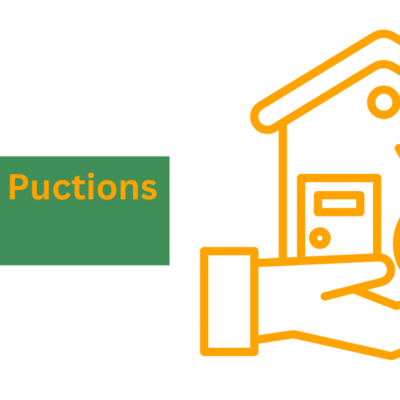It’s time to optimize your HVAC system performance through strategic cleaning and maintenance practices that extend equipment life, reduce operating costs, and ensure reliable operation during Calgary’s extreme weather conditions. This comprehensive approach transforms reactive emergency repairs into proactive system management with predictable outcomes.
The Critical Importance of HVAC Maintenance in Calgary’s Climate
Calgary’s unique climate conditions create specific challenges for HVAC systems that make regular maintenance particularly valuable. Extreme temperature variations from -30°C winter conditions to +30°C summer peaks place extraordinary demands on equipment flexibility. Chinook wind events introduce rapid temperature fluctuations that stress control systems and mechanical components. Low ambient humidity during winter months affects system operation while creating special maintenance requirements not found in more humid regions.
“Assess your current maintenance strategy and identify high value initiatives to design a future-proofed HVAC maintenance structure,” recommends our service manager. “This data-driven approach prevents system failures during critical weather events while optimizing equipment longevity and operating efficiency.”
Essential HVAC Cleaning Tasks for Homeowners
Air filter replacement represents the single most important homeowner maintenance task with significant performance implications. Clean filters ensure proper airflow, maintain system efficiency, and prevent dust accumulation on sensitive components. Standard filters typically require replacement every 30-60 days during peak usage periods, while premium high-efficiency filters may extend to 90 days before performance degradation occurs. Filter selection should balance air quality requirements against airflow restrictions, as extremely dense filtration can impede system performance without appropriate compensation.
Supply and return vent cleaning prevents airflow restrictions while reducing dust circulation throughout living spaces. Remove vent covers periodically and vacuum visible dust accumulation using standard household equipment with brush attachments. Inspect vent interiors for visible mold, excessive dust buildup, or moisture damage that might indicate deeper system issues requiring professional attention. Ensure all vents remain unobstructed by furniture, drapes, or other items that could restrict proper air distribution.
Outdoor unit maintenance ensures efficient heat transfer for air conditioning systems and heat pumps. Clear vegetation, debris, and snow accumulation from around outdoor components, maintaining at least 60cm (24 inches) of clearance on all sides. Gently clean condenser coil surfaces using appropriate commercial cleaners or mild soap solutions with garden hose rinsing—never use pressure washers that can damage delicate fins. Inspect cabinet panels for proper attachment and verify that the unit remains level on its mounting pad.
Condensate drain cleaning prevents water damage and system inefficiency caused by drainage restrictions. Locate the main condensate drain line typically exiting your indoor air handler or furnace, and periodically flush with a mixture of water and vinegar to prevent biological growth and mineral accumulation. Inspect visible portions for proper slope that promotes gravitational drainage without water traps. Consider installing algaecide tablets in drain pans to prevent biological growth between maintenance sessions.
Thermostat maintenance ensures accurate temperature control and appropriate system response. Clean thermostat housings with soft cloths to prevent dust accumulation that might affect sensitive components. Check and replace batteries in non-hardwired models to prevent unexpected system failures. Verify proper programming that aligns with occupancy patterns and seasonal requirements, updating as needed to optimize comfort and efficiency.
“Identify and evaluate accessible components for appropriate homeowner maintenance,” our HVAC technicians advise. “This selective approach ensures proper attention to user-serviceable items while avoiding inadvertent damage to sensitive components that require professional handling.”
Professional HVAC Maintenance Procedures
Comprehensive professional HVAC maintenance extends far beyond homeowner-accessible components to address specialized equipment requiring technical expertise and specialized tools. These procedures typically occur during scheduled service visits by qualified HVAC technicians who follow systematic inspection and maintenance protocols.
Heat exchanger inspection represents a critical safety and efficiency check for combustion-based heating systems. Professional technicians examine these components for cracks, corrosion, or deformation that could allow combustion gases to enter living spaces. This examination requires specialized equipment including borescopes and infrared cameras to detect problems invisible during visual inspection. Given the potential carbon monoxide risks associated with compromised heat exchangers, this inspection should never be overlooked or delayed.
Coil cleaning for both evaporator (indoor) and condenser (outdoor) components restores heat transfer efficiency lost through normal operation. Indoor evaporator coils accumulate dust and biological films that insulate surfaces and restrict airflow, while outdoor condenser coils collect environmental contaminants including pollen, leaves, and urban pollutants. Professional cleaning uses specialized chemical formulations and application techniques that remove contamination without damaging delicate fin surfaces or surrounding components.
Electrical system inspection identifies potential failure points before they cause system interruption. Technicians check all electrical connections for proper tightness, examine wiring insulation for heat damage or deterioration, test capacitors for proper operation, and verify appropriate voltage and amperage at key system points. This comprehensive examination prevents both safety hazards and the component failures that often lead to emergency HVAC repair situations during extreme weather events.
Refrigerant system evaluation ensures proper charge levels and detects developing leaks before significant performance degradation occurs. Proper refrigerant charge directly impacts system efficiency, capacity, and component longevity, with variations of just 10% potentially reducing efficiency by 20% or more. Professional evaluation uses specialized gauges and temperature measurements to precisely determine system condition and make appropriate adjustments when necessary.
Blower component service optimizes air distribution throughout your home. Technicians clean blower wheels to remove accumulated dust and debris that causes imbalance, check motor bearings for appropriate lubrication, verify belt condition and tension on belt-driven systems, and confirm proper alignment of all rotating components. This service prevents the airflow restrictions that represent the most common cause of system inefficiency and premature component failure.
Combustion analysis ensures heating systems operate safely and efficiently. This procedure examines fuel-to-air ratios, measures combustion efficiency, verifies proper ventilation of exhaust gases, and confirms appropriate operation of safety controls. Modern condensing equipment requires precise combustion adjustment to achieve rated efficiency levels, making professional analysis particularly important for newer high-efficiency systems.
“Phase 1 of professional maintenance focuses on comprehensive system evaluation before performing specific service procedures,” explains our technical director. “This assessment-first approach ensures maintenance addresses actual system conditions rather than following generic checklists that might miss critical issues.”
Seasonal Maintenance Timing for Calgary’s Climate
Fall preparation focuses primarily on heating system readiness before winter demands begin. Schedule professional furnace maintenance in September or early October before the first significant cold weather arrives. This timing allows identification and correction of developing issues while temperatures remain moderate and emergency service demand remains low. Complete air filter changes, verify thermostat programming for winter operation, and conduct visual inspections of all accessible heating system components as part of this seasonal transition.
Spring preparation addresses cooling system requirements following winter dormancy. Schedule air conditioner or heat pump maintenance in April or early May before summer cooling demands begin. This service includes thorough cleaning of outdoor units following winter exposure, condensate system verification, and refrigerant level checks essential for efficient operation. Reset thermostats for cooling season operation and verify appropriate programming for summer occupancy patterns.
Mid-winter maintenance checks provide assurance during Calgary’s most demanding heating period. Schedule brief system inspections in January to verify continued optimal operation during peak demand. This interim check typically includes filter assessment, visual inspection of critical components, and verification of proper system response to thermostat commands. Addressing minor issues identified during these inspections prevents the system failures that often occur during extreme cold events.
Mid-summer performance verification ensures cooling system optimization during peak demand periods. Schedule brief system evaluations in July to confirm proper operation and identify developing issues before potential failure during heat events. These inspections typically focus on airflow verification, condensate drainage confirmation, and outdoor unit condition assessment following the first months of operation.
“Align maintenance timing with Calgary’s specific seasonal transitions,” our scheduling specialists recommend. “This climate-focused approach ensures system readiness before seasonal demands rather than addressing problems after they impact comfort or create emergency situations.”
HVAC Maintenance Plans: The Strategic Approach
Comprehensive maintenance agreements provide structured system care with significant advantages over reactive approaches. These programs typically include scheduled professional services, priority emergency response, preferential pricing on repairs and replacements, and systematic documentation of system condition. The consistent attention these programs provide delivers measurable benefits in reliability, efficiency, and equipment longevity.
Reliability improvements represent the most immediately apparent benefit of systematic maintenance. Systems receiving regular professional attention experience 70-80% fewer unexpected failures compared to those operating without structured maintenance. This dramatic reduction in emergency situations provides peace of mind while preventing the discomfort and potential property damage associated with system failures during extreme weather events.
Efficiency preservation through regular maintenance delivers substantial economic benefits throughout equipment lifetime. Studies by the Department of Energy indicate that properly maintained HVAC systems consume 15-20% less energy than neglected equipment. This efficiency preservation translates directly to lower utility costs and reduced environmental impact while maintaining consistent comfort conditions.
Extended equipment lifespan resulting from proper maintenance significantly reduces lifetime ownership costs. Regularly maintained systems typically operate effectively for 15-18 years, compared to 7-10 years for neglected equipment. This lifespan extension effectively reduces annualized replacement costs by 40-50% while minimizing the inconvenience associated with premature system replacement.
Warranty protection often requires documentation of appropriate maintenance to maintain coverage validity. Most equipment manufacturers specifically condition warranty coverage on performance of recommended maintenance procedures at appropriate intervals. Structured maintenance programs provide the consistent care and documentation required to preserve these valuable protections throughout the warranty period.
“Identify and publish maintenance requirements specific to your installed equipment,” our warranty specialists advise. “This equipment-focused approach ensures compliance with manufacturer specifications rather than relying on generalized maintenance that might not address critical system-specific requirements.”
Conclusion: The Maintenance Advantage
Implementing comprehensive HVAC maintenance delivers significant benefits for Calgary property owners facing our region’s challenging climate conditions. By combining appropriate homeowner tasks with professional expertise through structured maintenance plans, you create a robust protection strategy for these essential home systems while optimizing performance, efficiency, and reliability.
Remember that proactive maintenance represents an investment rather than an expense when considering lifetime system costs. The combination of extended equipment life, reduced energy consumption, and fewer emergency repairs typically delivers financial returns exceeding maintenance costs by 200-300% over equipment lifetime. This exceptional value proposition makes comprehensive maintenance one of the most financially sound decisions available to property owners.
For assistance establishing appropriate maintenance protocols for your specific HVAC system, contact Purcell Heating and Air. Our experienced HVAC technicians provide comprehensive maintenance programs tailored to Calgary’s unique climate challenges and your specific equipment requirements.


